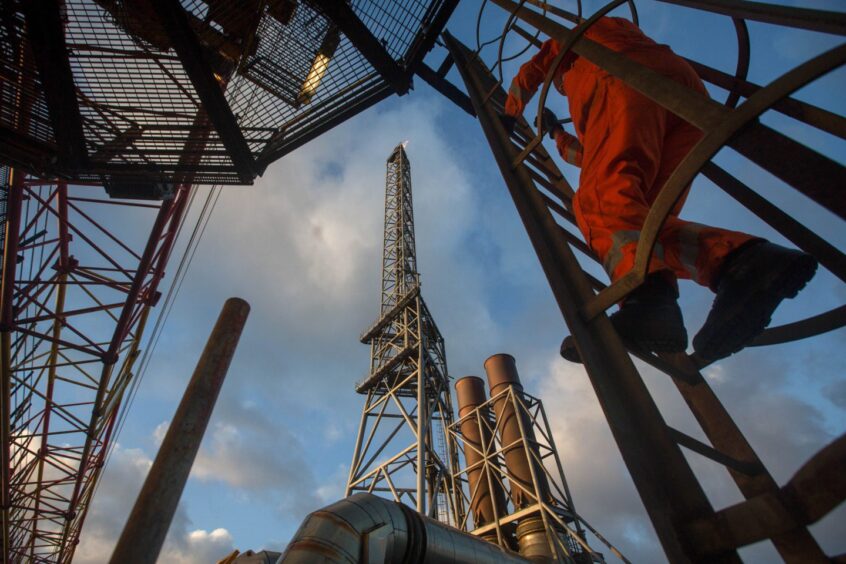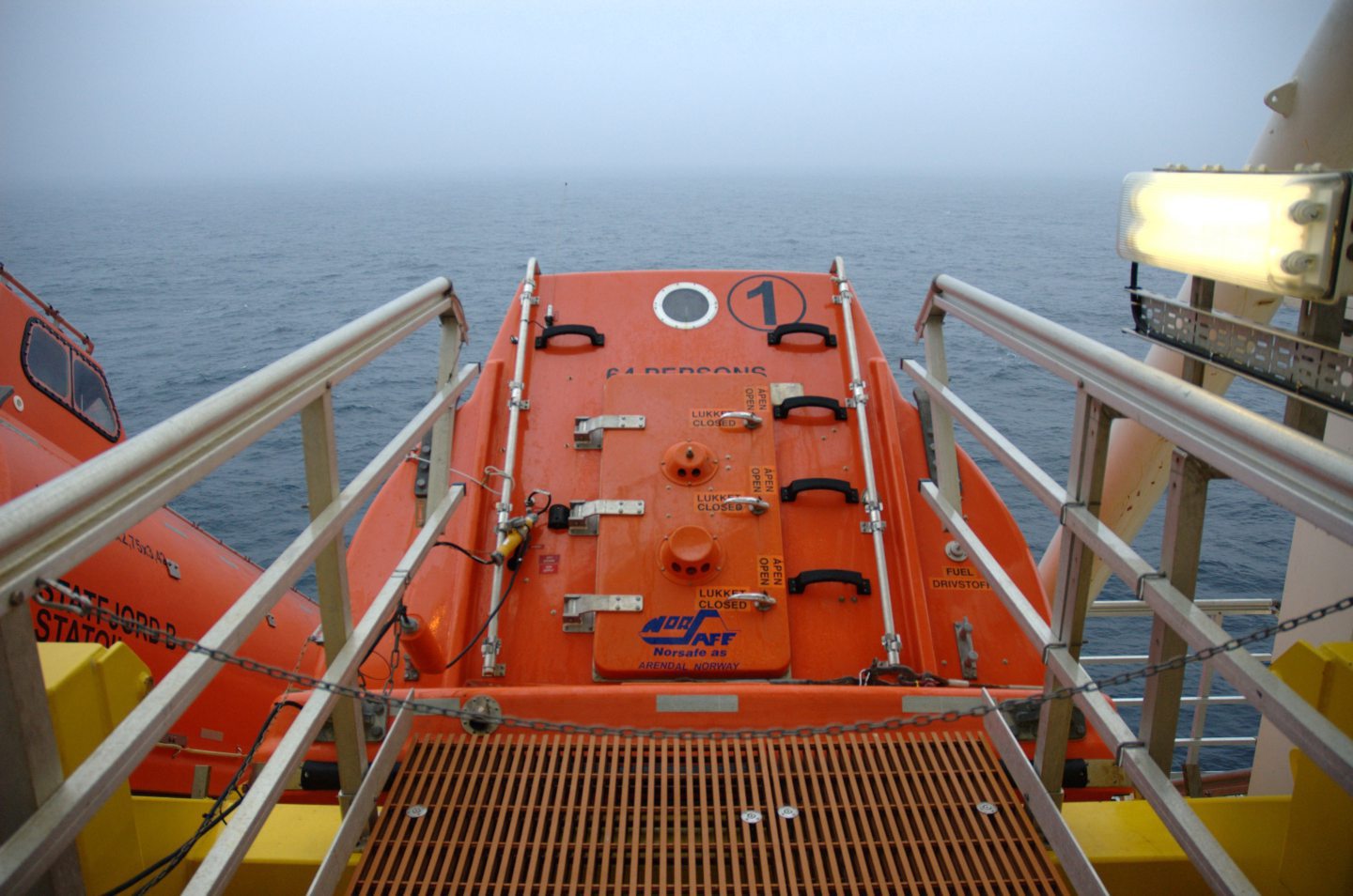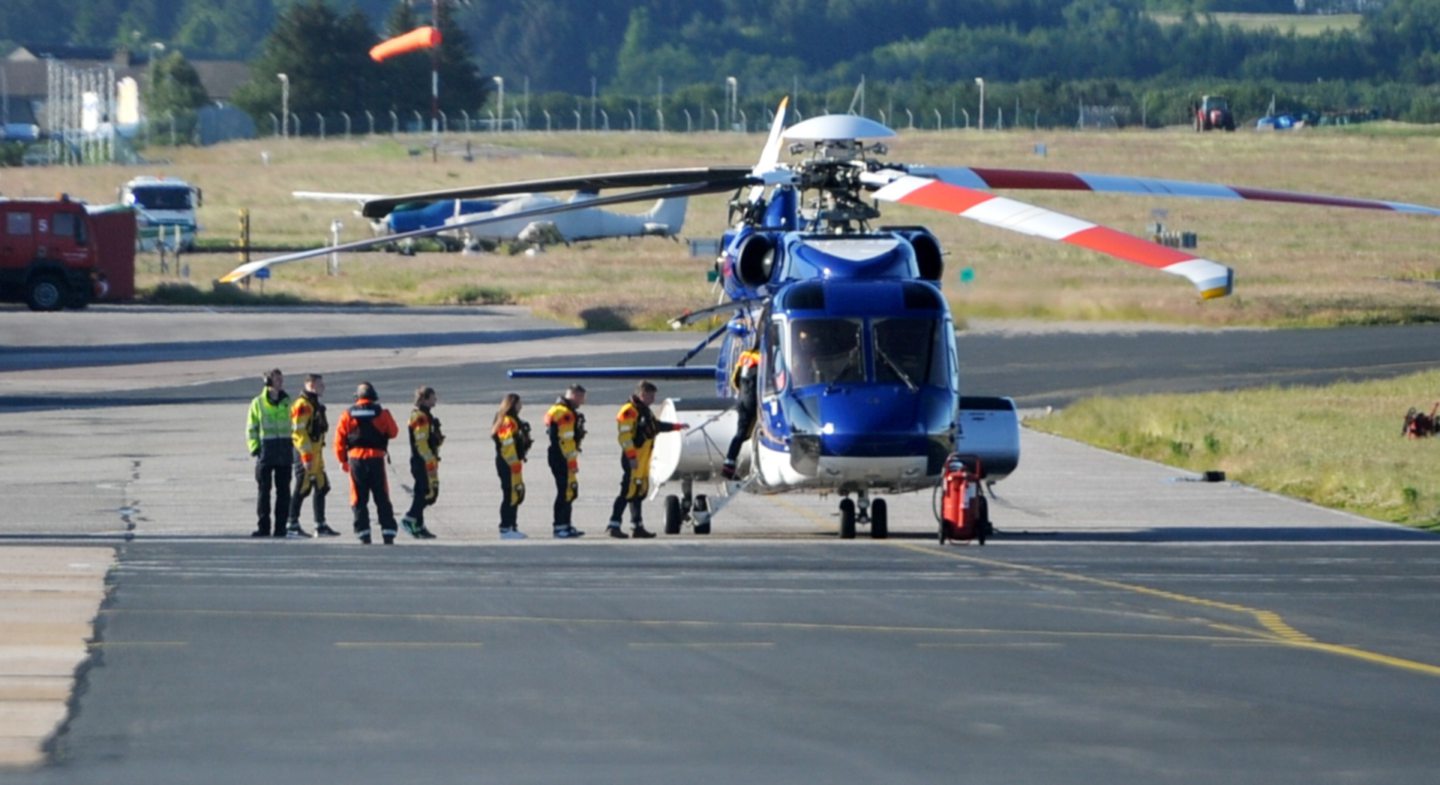
More than a third of North Sea workers are now too large to safely fit in lifeboats on UK oil and gas platforms, Energy Voice can reveal.
Data obtained from the Health and Safety Executive (HSE) via a Freedom of Information request shows an estimated 36% of workers are in excess of the 100kg maximum load design per person for most lifeboats used in the sector – while an estimated 5% are above 125kg.
Weight is one piece of the issue along with a broader overall size of workers, as “bigger” and taller persons are unable to secure themselves inside lifeboats or occupy certain seats in an emergency.
The industry previously assumed the average weight was below the threshold, but emails sent to inspectors in recent weeks disclosed new data showing a third of the workforce is now too heavy.
Correspondence between the HSE and trade body Offshore Energies UK (OEUK) outlined the “angst” of safety experts over the issue, with one questioning “whether this can be managed”.
Operators now need to take full account of the average weight of persons onboard and whether their life-saving kit, including lifeboats, is suitable.
According to OEUK’s latest workforce insight report, there were 36,946 offshore travellers in 2021, including 17,745 “core workers”.
Industry commentators have pointed to the wider societal issue of people becoming bigger – nevertheless, North Sea operators are legally bound to ensure, as far as reasonably practicable, that “all persons” can be safely evacuated in an emergency.
HSE said it has uncovered cases of dutyholders “ignoring” manufacturers’ maximum design loads and failing to demonstrate safe evacuation procedures.
The watchdog said the figures mean lifeboats and winches risk being overloaded due to the combined weight – with knock-on issues around training and whether injured persons on stretchers can be loaded in.
It also affects other life-saving appliances like life rafts, immersion suits and personal descender devices.
114 out of 120 harnesses ‘too small’
A recent inspection of one platform found 114 out of 120 lifeboat harnesses were “too small to fit the girth of crew members”.
OEUK has issued guidance to industry, now under review, to tackle the issue, but the trade body said this will not include measures precluding workers with valid medicals from going offshore from a size or weight perspective.
HSE said following a short grace period it “will be looking for assurances” that the problem is being effectively managed during its Q4 offshore inspections, ensuring that lifeboats are fit for purpose.
Letters seen by Energy Voice show issues from inspections on Ithaca Energy, Taqa and Apache platforms, since rectified.
The HSE first raised the problem in 2008 and has taken enforcement action on it, with operators having taken steps including reducing lifeboat capacities.
It had previously been estimated – from Civil Aviation Authority data – that the average weight per person offshore was 98kg for men, 77kg for women.
However, the revelation came after a review of 39,000 “vantage” logistics records for the workforce, sparking concern from the HSE which sent a notice out to its inspection teams on November 1.
Industry seeking ‘medium-term and long-term solutions’
Graham Skinner, health and safety manager at OEUK, said the trade body is taking “a rigorous approach to this complex issue and seeking out immediate, medium-term and long-term solutions” to ensure it is thoroughly addressed and that the workforce remains safe.
He added: “Challenges related to the size and shape of offshore workers have been a consideration for more than 15 years. This issue is not oil and gas specific, but related to changes in workforce demographics and seen generally across the population.
“As a result of observations raised by industry and the safety regulator, OEUK conducted a review of offshore weights and then coordinated an exercise to consider all the implications related to the size and shape of offshore workers.”
An HSE spokesperson said: “This is an ongoing issue of concern. The average size and weight of the offshore workforce has continued to grow – offshore dutyholders have a legal duty for the safety of their workers.
“This includes taking adequate account of the current average weight and size of people when determining the suitability of evacuation and escape systems used offshore.
“We’re actively supporting the industry to address the issues – OEUK have drafted industry guidance, which is currently out for consultation, which we will continue to monitor.”
Aberdeen South MP Stephen Flynn said: “Our offshore workforce perform some of the most dangerous jobs in the world and safety must be absolutely paramount.
“I trust that both industry and the Health and Safety Executive will take this matter very seriously and take whatever measures are necessary to keep our workers in the North Sea safe.”
An RMT spokesperson said: “All offshore workers have to pass strenuous medical checks in order to perform their duties.
“If there are concerns about offshore workers health, in relation to the use of any equipment, then employers have a duty of care to ensure modifications, that do not cause any detriment to our members, are made that keeps everybody safe.”
Societal issue
Steven Harris, managing director of Integrity HSE, said the problem is likely part of a wider societal health issue.
“Logic would suggest that this is an oversight and not a surprise to duty holders. How can it be anything else when every person that flies to and from their installation is weighed?
“This is likely to be symptomatic of a wider societal health issue. To address it, responsible duty holders must create an offshore workplace where the healthy option is the default, and not the exception. That is not currently the case on most installations”.
Occupational health specialists have previously highlighted that some workers are getting larger through means including weight lifting – but the need for an overall lifestyle change around diet and exercise remains.
Mr Harris added that regulators will need to take action if operators don’t get a handle on the issue.
“In conjunction with that, I would expect our trade bodies to issue guidance that helps the industry to comply. This process may involve some uncomfortable truths because being big is not a protected characteristic under UK law. It may well be the case that some people are just too heavy to work offshore”.

 © Shutterstock / Ingvar Tjostheim
© Shutterstock / Ingvar Tjostheim © DCT
© DCT © Supplied by SPE
© Supplied by SPE © Supplied by -
© Supplied by -